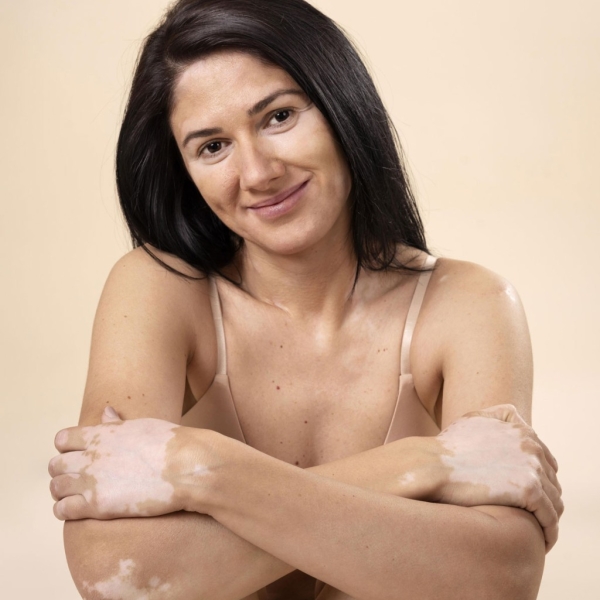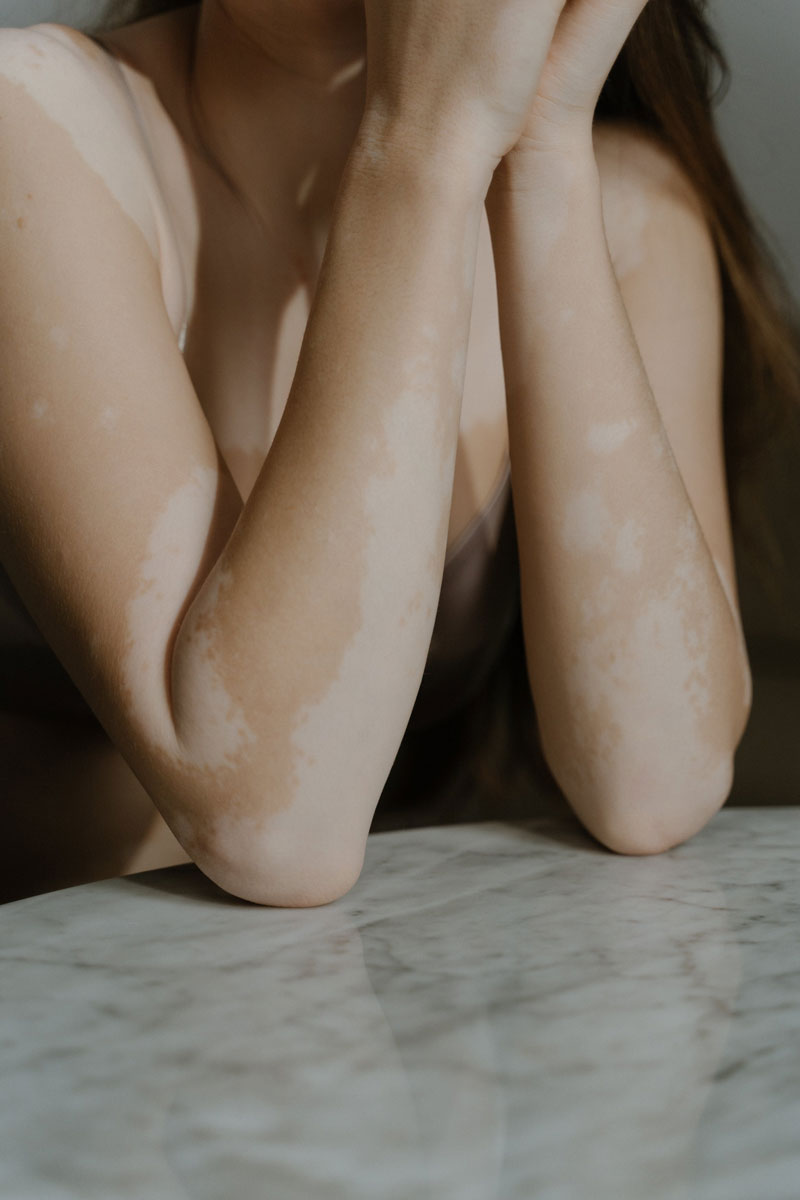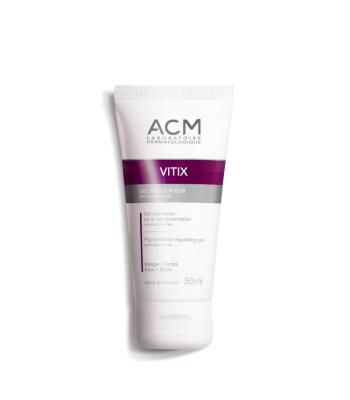What is vitiligo and how is it treated?
7 minVitiligo is a relatively common skin disorder that manifests as flat, well-defined, white patches on the face, extremities, joints or genital area. According to the Inserm website, between 0.5 and 1% of the world's population suffers from this condition, which affects men, women and children, with all skin phototypes. This article summarises everything you need to know about vitiligo, including the causes, treatments and how to conceal it with corrective make-up.

Sommaire











